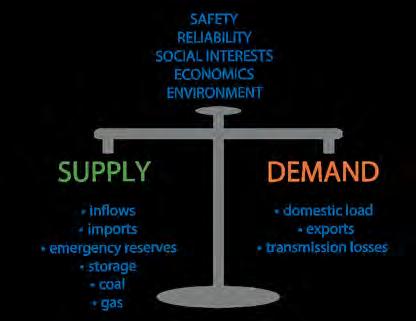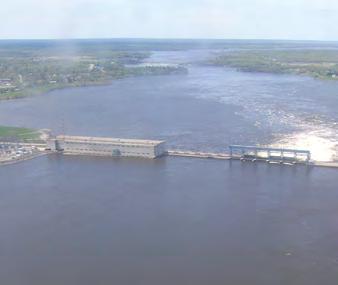

Manitoba Hydro System Operation
WHAT IS CAMP?
The Coordinated Aquatic Monitoring Program (CAMP) monitors the health of aquatic ecosystems in water bodies connected to Manitoba Hydro’s electricity generating system The goal of the Program is to better understand how hydroelectric operations affect these ecosystems. CAMP was established in 2006 with a Memorandum of Understanding between the Manitoba Government and Manitoba Hydro. Until that time, both organizations carried out aquatic monitoring activities in isolation.
CAMP created a partnership so that system-wide monitoring could be better coordinated. Monitoring started in 2008.

SYSTEM OPERATIONS
Operating a power system is a complex process. The supply of electricity (electrical generation) must be balanced with electricity demand (electrical power load) over any given period, from the next hour to months in the future. As a result, a plan of operating decisions must be put in place to ensure that this balance is maintained.
Developing an optimal plan would be relatively simple if economics were the only priority. However, the actual challenge is more complex because additional, often competing, priorities such as recreational water needs, environmental effects, must also be considered.
INFLOWS
The inflow of water is a major driver of Manitoba Hydro’s operations. Inflows are driven by rainfall and snowfall in the more than 1,300,000 km2 area of land that supplies water to Manitoba. This area is called the watershed. Inflows vary considerably from year to year because of variability in precipitation. Manitoba Hydro constantly monitors rainfall, river flows, and lake levels to adjust operations to changing conditions.

Energy supply and demand
WINNIPEG RIVER OPERATION
Manitoba Hydro’s six generating stations along the Winnipeg River are operated primarily as run-of-the-river plants. That means that water flowing to them from upstream is used immediately over the course of the day and is not stored in the reservoirs for later use. Almost all the flow of the Winnipeg River in Manitoba originates in Ontario and is regulated by the Lake of the Woods Control Board.

Winnipeg River at Pine Falls
GRAND RAPIDS OPERATION
Grand Rapids is Manitoba Hydro’s only generating station along the Saskatchewan River. As well as producing electricity, it is also the controlling station for the entire power system. In other words, the units in the generating station respond to short-term changes in the demand for electricity to keep supply and demand in balance.
Grand Rapids operates with Cedar Lake as its reservoir. This allows water to be stored during lower demand periods of the year for use during winter.
Churchill and Nelson rivers watershed
LAKE WINNIPEG REGULATION AND CHURCHILL RIVER DIVERSION
Manitoba Hydro System maximizes the flow of water to the lower Nelson River during the winter to supply electrical generation when Manitoba’s electricity demand is the highest. This means that the Lake Winnipeg Regulation outflow at the Jenpeg generating station and the Churchill River Diversion outflow from Southern Indian Lake at the Notigi control structure are typically maximized for most of the winter season each year.
Changing inflows of water and the need to balance competing priorities make operations during the spring, summer and fall more variable than they are in the winter. During drought conditions, the Lake Winnipeg Regulation and Churchill River Diversion outflows at Jenpeg and Notigi are reduced to conserve water in Lake Winnipeg and Southern Indian Lake. This ensures that there is enough water to meet energy demands the following winter. During flood conditions, outflows at Jenpeg are increased to reduce flooding on Lake Winnipeg and excess water in Southern Indian is released to the lower Churchill River at the Missi Falls control structure.
LOWER NELSON RIVER GENERATING STATIONS
Manitoba Hydro’s Kettle, Long Spruce, and Limestone generating stations use a daily cycling pattern to match daily and weekly energy production to consumption patterns. Flows are typically increased each morning and maintained until late afternoon or evening. The flows are then decreased to reach the lowest levels overnight.

Other CAMP Fact Sheets
• Hydrology 101
• Manitoba Hydro System Operation
• Trophic Levels and Food Webs
• Aquatic Ecosystem Health Indicators
• Water Quality
• Benthic Macroinvertebrates
• Fish as an Indicator
Limestone Generating Station
